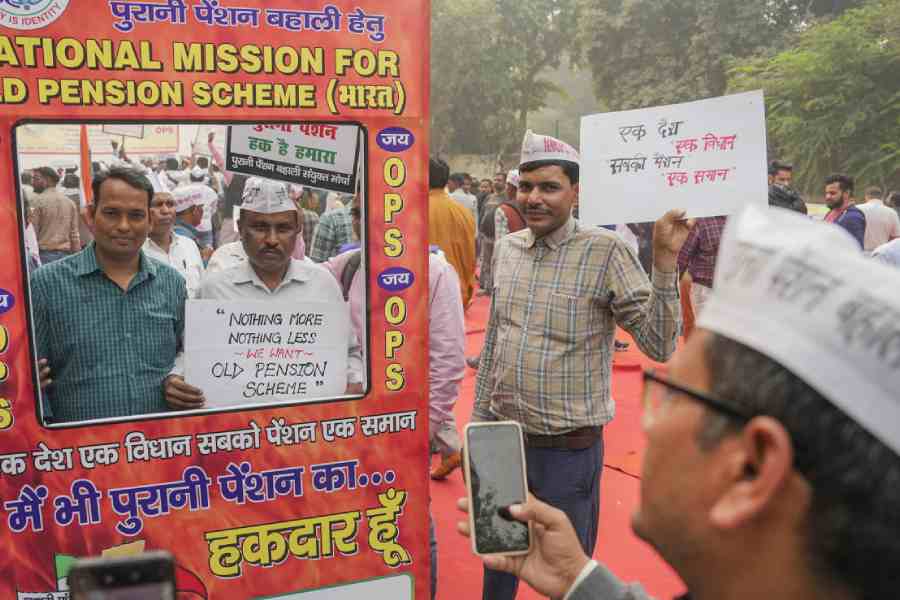It is pertinent that structural reforms come into focus following economic crises, be they local or global. It is no different this time. With a series of crises in the backdrop, starting with a pandemic, then war and sanctions, more armed conflicts, and much else that continue, structural reforms have become critical for enhancing growth. The medium-term outlook for the world economy is gloomy, according to the International Monetary Fund’s assessment shared last month. To break out of this, countries must overcome longstanding weaknesses like demographic shifts and slowing productivity and fortify themselves for new challenges, such as green transition and rapid technological change. Earlier, its sister institution, the World Bank, also favoured these to avoid getting trapped at middle-income levels.
Set in this context, the emphasis on the removal of obstructions, allowing market-based incentives, and remedying imbalances provide a pathway to sustainable economic growth. A broader perspective justifies this. Fundamental changes in an economy increase the capacity to grow on a lasting basis as compared to fiscal-monetary policies that are, in essence, short-term macroeconomic tools for navigating cyclical ups and downs; used for too long, the latter risk macroeconomic imbalances, instability, and even a crisis. Structural reforms, on the other hand, aim to alter existing arrangements, regulations, or practices in the economic system to raise productivity with better allocation of resources, more competition, and flexibility. Changes like these provide fresh economic opportunities for investments, boosting growth and employment.
Because they change relative prices and, hence, returns upon investments, structural changes are attractive for entrepreneurship and enterprise, domestic or foreign. Why wouldn’t businesses and investors seek to capitalise on new profitable avenues and risk capital?
Structural reforms are perfect in theory, but they are easier said than done. Permanent shifts in economic organisation, especially when policy-induced, can be extremely disruptive unlike endogenous or slow-moving changes that are also fundamental in nature — for instance, agriculture ceding share to secondary and tertiary sectors during economic development and productivity and technological innovations like computerisation, automation and so on — but are more gradual and less noticeable. Policy-driven attempts are glaringly visible in contrast, even though their effects are not immediately felt. Stakeholders perceive that some businesses or activities will simply become unprofitable and fail or die, producing losers and fanning social discontent. At the same time, gains can accrue to others who tap into the new opportunities.
Because the costs and the benefits are unevenly distributed and can persist for long, unless sufficiently mitigated or compensated, it is no surprise that such reforms are resisted more often. Easy acceptance is thus rare.
Recent examples within India elaborate this point. The set of agricultural reforms in 2020 elicited a fierce backlash and prolonged resistance; so much so that they had to be rolled back eventually. Another example is the surfacing of long-festering discontent over a past pension reform to overhaul public finances; this has manifest in demands for reversion to the old pension scheme, leading to an acceptance of modifications to mollify the discontent.
It is not difficult to understand why governments hesitate to go the full mile on structural reforms. Sometimes they are forced to and left with no choice. The history of reform episodes, recently reviewed by the IMF, shows that the pace of reform efforts has more than halved since the global financial crisis of 2008–09. A significant chunk of the attempted ones was not implemented.
Is it a coincidence that the world economy grew markedly slower during this period? A 3.7% average a year growth of global output in 2010-2019 was significantly below the 5.9% averaged annually during 2003-07. The slowdown period also coincides with increased inequality within countries, rise in protectionist trade policies, populism and political turbulences. This would suggest that governments chose safe options than risk further discontent. Does the correspondence suggest governments chose safer options rather than counter long-term factors weighing down growth and thus risked even greater discontent?
Perhaps timing matters in pushing structural policies that improve prospective growth compared to immediate outcomes attainable by, say, populist fiscal measures, which aggravate public debt and deficits when growth disappoints. Together with the continuous crises in recent years, these have now reached precarious levels, endangering stability. It underscores the limitations of most countries at this point — there is little scope for more such. Or that time may have run out and the safest, surest path to accelerating output is via fundamental improvements as required by individual economies.
What is the likelihood of doing so in the foreseeable future? One is tempted to speculate that this is hugely uncertain, the balance tilted more to the downside at this point. For one, we are now in a context where the world is in a state of ‘permacrisis’, as states the title of a book (Permacrisis: A Plan to Fix a Fractured World by Gordon Brown, Mohamed A. El-Erian and Michael Spence). This is more certain than not. Two, and not unrelated, is a new political dispensation and president of the United States of America that itself seems set to be a source of big structural change for the world economy as a whole. If the massive tariff increases, mass deportations, lower corporate taxes, and deregulation promises were to materialise, the math for the rest of the world would change drastically. The rest will not remain passive either.
It would be remarkable if countries initiated structural changes on their own turfs without full knowledge and sight of what may lie ahead even as they brace themselves and consolidate economic strength. But they are more likely to wait and see.
Renu Kohli is an economist with the Centre for Social and Economic Progress, New Delhi










